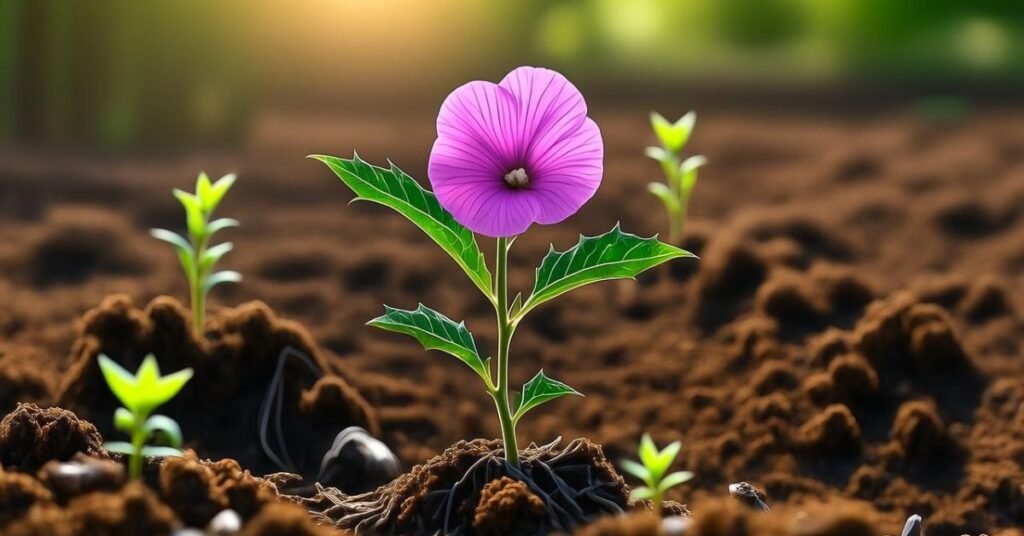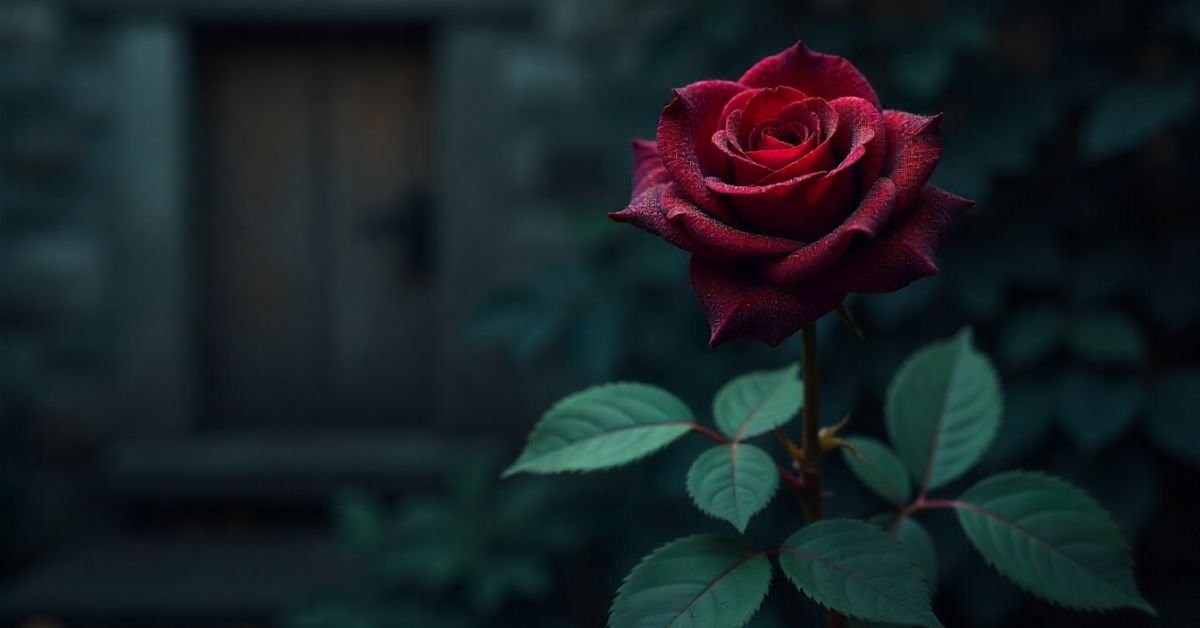Introduction
The black rose plant is a unique succulent. It is known as the Aeonium arboreum ‘Zwartkop’. Its leaves are dark purple that look almost black. The plant grows in a rosette shape and adds beauty to any garden.
Many people love it for its rare color. It stands out among green plants and flowers. If you want something different in your home garden, this plant is a perfect choice. It can be a centerpiece and spark interest from visitors.
This plant needs full sunlight to show its dark shade. It grows well in warm and dry soil. With little care, it gives a long lasting charm in your garden. It is easy to manage and a great pick for beginners.
Black Rose Meaning
The black rose is rare and special. It often stands for mystery and power. Many people see it as a symbol of new beginnings and change. In some cultures, it also shows farewell or endings. Its dark color makes it unique and full of deep emotions.
Are Black Roses Real
Black roses are not truly black. They are very dark red or deep purple flowers that look black in some light.
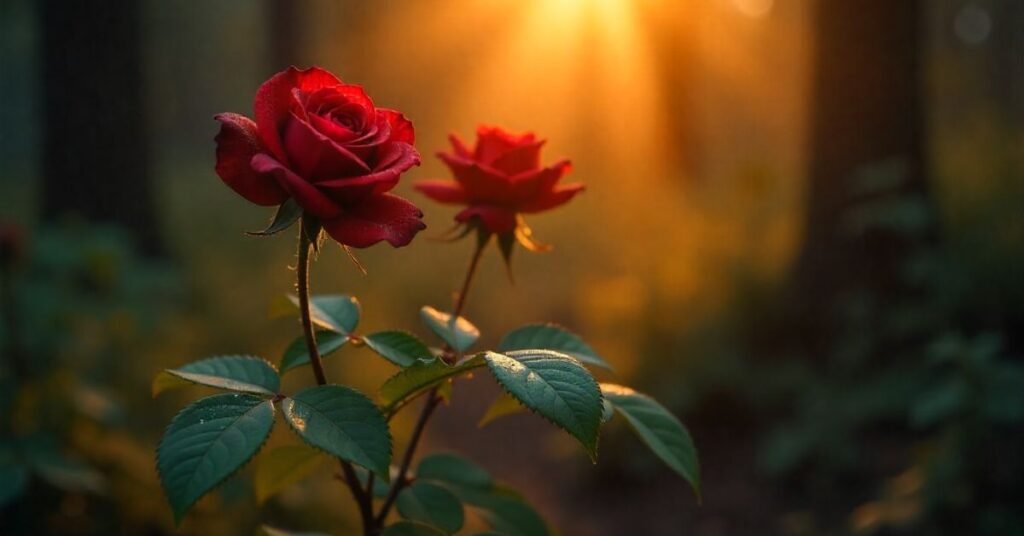
These roses are rare and grown in special conditions. People often call them black because of their unique and dark color.
Watering
Aeonium Black Rose needs water based on climate and humidity. In hot summers, water every 7 days. During cool weather, water every 12 days outdoors. In humid places, reduce watering. During winter, rely on rainwater if possible. Water every 3 weeks if it doesn’t rain. Always check the soil; if it feels dry, water lightly. It is safer underwater than overwater.
Soil Requirement
This succulent grows best in well draining soil. Mix cactus potting mix with perlite for better drainage. If you live in a dry climate, use a 2:1 ratio, and if you live in a humid climate, use a 1:1 ratio. Perlite can also be substituted with coarse sand mixed with potting soil. Good drainage helps prevent root rot.
Light
Aeonium Black Rose likes partial shade but can adjust to full sun. If your area has strong sunlight, introduce it slowly to avoid sunburn. During extreme heat or a heatwave, move the plant to a shaded spot or keep it indoors for protection. Bright light keeps the leaves dark and healthy.
Temperature
- Ideal range: 70 to 85°F
- Can tolerate cold down to 30°F (not lower)
- Move indoors during colder months
- Place near a sunny window when inside
- Water less in winter
- Protect from freezing conditions to prevent damage
Are Aeonium Black Rose Indoor or Outdoor Plants?
Aeonium Black Rose needs plenty of sunlight to stay healthy. These succulents thrive outside in warm, bright conditions. They can handle mild cold but do not grow well in harsh frost. In outdoor spaces, they show their darkest color and grow stronger.
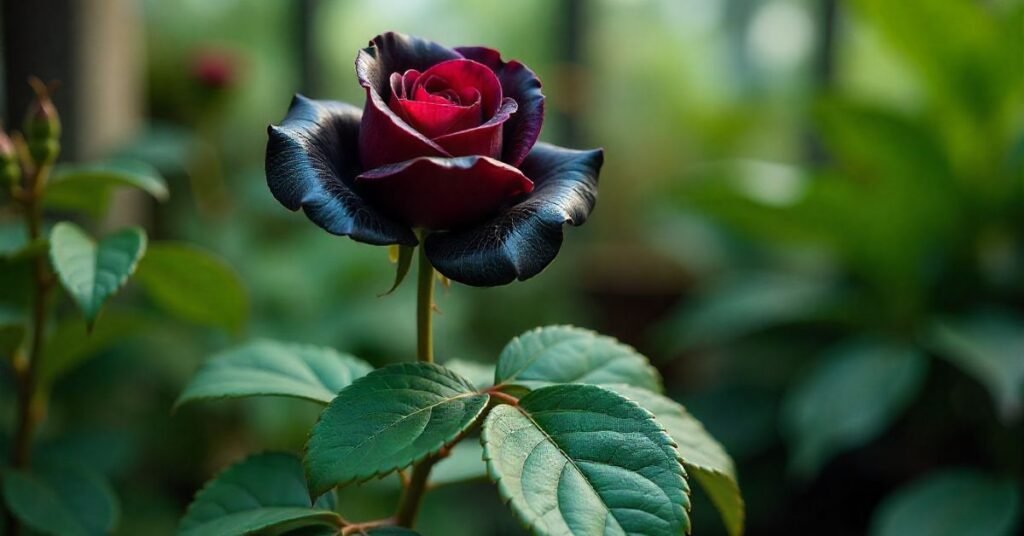
You can also keep them indoors with the right setup. Place the pot near a sunny window for maximum light. Use well draining soil and avoid excess watering. With proper care, Aeonium Black Rose can adapt as both a striking outdoor plant and a stylish indoor choice.
Aeonium Black Rose Frost Tolerance
- Aeonium Black Rose can handle mild frost but not strong freezes.
- If exposed to freezing temperatures for long, the plant may die.
- In mild winters, it can stay outdoors and grow fine.
- In cold regions, move the plant indoors before frost.
- Grow them in containers for easy transfer during winter.
- If planted in the ground, use frost covers or cloths for protection.
Propagation of Aeonium Black Rose
Aeonium Black Rose cannot grow from leaves. The best method is stem cuttings. Follow these steps:
Step 1: Cut a healthy stem. Let it dry for 2 to 3 days. In humid areas, it may take longer. Thick stems need more time to dry.
Step 2: Once dry, place the stem in well draining soil. You may dip it in rooting hormone for faster growth (optional).
Step 3: Water lightly when the soil feels dry. Keep the pot away from direct sunlight. Roots will form in a few weeks.
Step 4: Check rooting by gently pulling the stem. Once rooted, slowly increase sunlight. Reduce watering as the plant matures.
Common Problems in Aeonium Black Rose
| Problem | Signs | Cause | Solution |
| Falling Leaves | Bottom leaves dry, brown, droopy | Natural growth | Remove old leaves or let them fall naturally |
| Excess Leaf Drop | Many leaves falling quickly | Underwatering | Water deeply; plant perks up in 1 to 2 days |
| Excess Leaf Drop | Soft, yellow leaves dropping | Overwatering | Remove from wet soil, let dry, replant in well draining mix |
| Aphids | Small green/black insects on leaves/stems | Pest infestation | Spray with insecticidal soap or neem oil |
| Mealybugs | White cottony patches on stems/leaves | Pest infestation | Remove with alcohol swab, treat with neem oil or insecticidal soap |
Blooming and Dormancy
Aeonium Black Rose is a monocarpic plant, which means it dies after flowering. However, it usually blooms only after producing many offsets and baby plants. The flowers are bright yellow and stand out against the dark rosettes, creating a striking contrast.
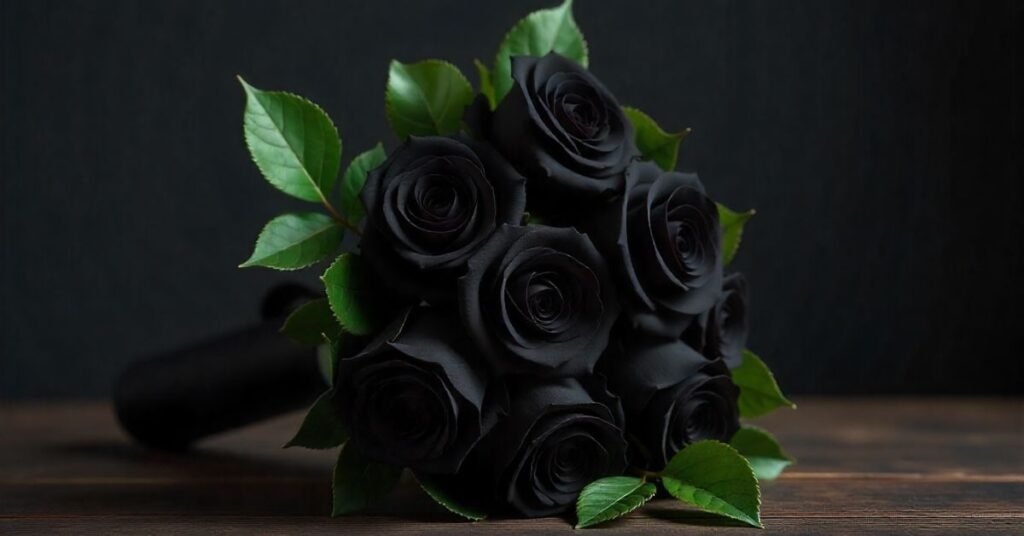
This plant also goes dormant in summer or during extreme heat. During dormancy, it may drop leaves and look bare, but this is normal. Once the weather cools, the plant perks up and begins growing again. Avoid repotting, cutting, or propagating during dormancy.
Conclusion
Aeonium Black Rose is a unique and hardy succulent. It brings beauty with its dark rosettes and bright yellow blooms. The plant is easy to care for with proper light, soil, and watering. It may look bare during dormancy, but it grows back strong. With simple care, this plant can thrive indoors or outdoors and add charm to any garden.
FAQs
Q1. Are black rose succulents real?
Yes, Aeonium ‘Zwartkop’ is a succulent with dark purple leaves that look almost black.
Q2. Can Aeonium Black Rose grow indoors?
Yes, it can grow indoors if placed near a bright, sunny window and in well draining soil.
Q3. How often should I water Aeonium Black Rose?
Water every 7–12 days depending on climate; less in winter and more in hot, dry weather.
Q4. Does Aeonium Black Rose die after flowering?
Yes, it is monocarpic, but it usually produces offsets before the main rosette dies.
Q5. Is Aeonium Black Rose frost tolerant?
It can handle mild frost but must be protected from freezing temperatures below 30°F.

